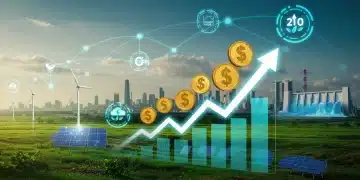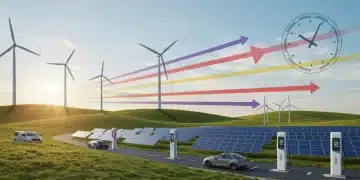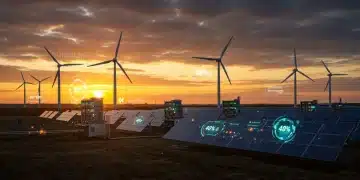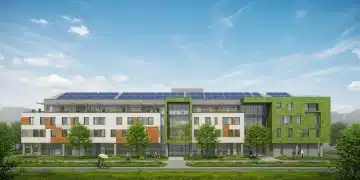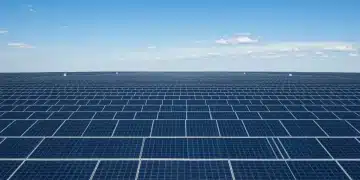Smart Grid Integration: Boosting U.S. Energy Reliability by 10% by 2025
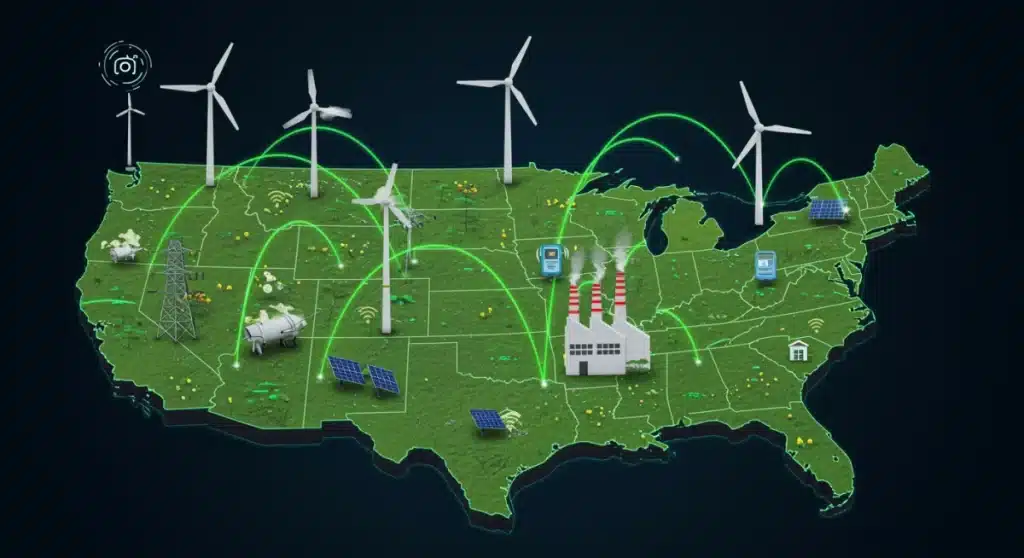
Smart grid integration, leveraging green technology, is on track to enhance U.S. energy reliability by 10% by 2025, promising a more stable and sustainable power infrastructure through advanced digital controls and renewable sources.
Smart Grid Integration: How Green Technology is Boosting U.S. Energy Reliability by 10% by 2025 is not just a future aspiration but a rapidly unfolding reality. The United States is currently experiencing a significant transformation in its energy infrastructure, driven by innovative green technologies. This shift promises a more resilient and efficient power system, directly impacting every American household and business. Recent developments indicate a clear path towards achieving a substantial increase in energy reliability within the next few years.
The Mandate for Modernization: Why Smart Grids Now?
The U.S. energy grid, largely built in the 20th century, faces increasing strain from extreme weather events, cyber threats, and growing demand. Modernizing this infrastructure is paramount. The push for smart grid integration is a direct response to these challenges, aiming to create a more robust and responsive system capable of adapting to a dynamic energy landscape.
This modernization effort is not merely about upgrading old equipment; it’s about fundamentally rethinking how energy is generated, distributed, and consumed. Smart grids incorporate digital communication technology to detect and react to local changes in usage and supply, providing a level of control and efficiency previously unattainable. This is critical for integrating intermittent renewable sources effectively.
Addressing Grid Vulnerabilities
The traditional grid operates largely as a one-way street, with power flowing from large centralized plants to consumers. This design makes it susceptible to widespread outages when a single point of failure occurs. Smart grids mitigate this risk by enabling two-way communication and decentralized control.
- Enhanced Outage Management: Smart grids can quickly identify the location and extent of outages, allowing for faster restoration times.
- Improved Cyber Security: Advanced encryption and monitoring systems are being implemented to protect against digital attacks.
- Demand-Side Management: Consumers can actively participate in energy management, optimizing usage during peak times.
Green Technology at the Core of Reliability
Green technology is not just about reducing carbon emissions; it’s also a powerful driver of energy reliability. The integration of renewable energy sources like solar and wind power, combined with advanced storage solutions, is fundamentally changing the grid’s operational dynamics. This diversification of energy sources reduces dependence on any single fuel type and enhances overall system resilience.
Recent advancements in battery storage technology, for instance, are making intermittent renewable energy sources far more dependable. When the sun isn’t shining or the wind isn’t blowing, stored energy can be dispatched to maintain a consistent supply. This capability is vital for ensuring grid stability and preventing disruptions.
Innovations in Renewable Integration
Integrating a high percentage of renewables into the grid requires sophisticated management systems. These systems predict energy output from various sources and balance it with demand. Machine learning and AI are playing a crucial role in optimizing these complex operations.
- Predictive Analytics: AI models forecast renewable energy generation based on weather patterns, enabling better grid planning.
- Flexible Generation: Hybrid power plants combining renewables with storage offer more controllable and reliable output.
- Microgrids: Localized grids capable of operating independently from the main grid provide critical backup during widespread outages.
The Role of Digitalization and Data Analytics
Digitalization is the backbone of smart grid integration. Sensors, smart meters, and advanced communication networks generate vast amounts of data in real time. This data is then analyzed to provide insights into grid performance, identify potential issues before they escalate, and optimize energy flow across the entire system. This intelligent oversight is key to boosting energy reliability.
The ability to monitor and control grid components remotely and instantaneously allows for rapid response to changing conditions, whether it’s a sudden surge in demand or an unexpected equipment failure. This proactive approach significantly reduces the likelihood and duration of power interruptions, making the grid inherently more reliable.
Real-Time Grid Management
The sheer volume of data being processed requires advanced analytical tools. These tools help grid operators make informed decisions quickly, ensuring the continuous and stable operation of the power system. This shift from reactive to proactive management is a hallmark of smart grid evolution.
One critical aspect is the use of distributed ledger technologies, such as blockchain, for secure and transparent energy transactions within localized grids. This can facilitate peer-to-peer energy trading and enhance the efficiency of renewable energy utilization. The Department of Energy has highlighted the potential for these technologies to further decentralize and secure energy markets.
Policy and Investment Driving Progress
Significant policy initiatives and substantial investments are fueling the accelerated pace of smart grid integration. Federal and state governments are recognizing the critical importance of a resilient energy infrastructure, allocating funds and enacting regulations that support the deployment of advanced grid technologies and renewable energy projects. These strategic investments are essential for achieving the 2025 reliability targets.
The Bipartisan Infrastructure Law, passed in 2021, includes billions of dollars specifically earmarked for grid modernization, including funding for smart grid technologies, transmission line upgrades, and cybersecurity enhancements. This financial backing provides a strong impetus for utilities and technology developers to innovate and implement new solutions at scale.
Key Policy Drivers
Regulatory frameworks are evolving to incentivize smart grid investments and overcome traditional barriers to innovation. These policies often include tax credits, grants, and streamlined permitting processes for renewable energy and grid modernization projects.
- Federal Grants: Programs like the Grid Resilience and Innovation Partnerships (GRIP) Program are funding transformative grid projects.
- State Mandates: Many states have renewable portfolio standards and clean energy targets that necessitate smart grid development.
- Public-Private Partnerships: Collaboration between government and private industry is accelerating the deployment of new technologies.
The Impact on Consumers and the Economy
The benefits of enhanced smart grid integration extend directly to consumers and the broader economy. A more reliable energy supply means fewer power outages, which translates into less economic disruption for businesses and greater comfort and safety for households. Reduced downtime for critical infrastructure, such as hospitals and communication networks, is also a significant advantage.
Furthermore, smart grids can lead to more efficient energy use, potentially lowering electricity bills for consumers. Demand response programs, enabled by smart meters, allow consumers to save money by adjusting their energy consumption during peak pricing periods. This creates a more dynamic and responsive energy market that benefits all stakeholders.
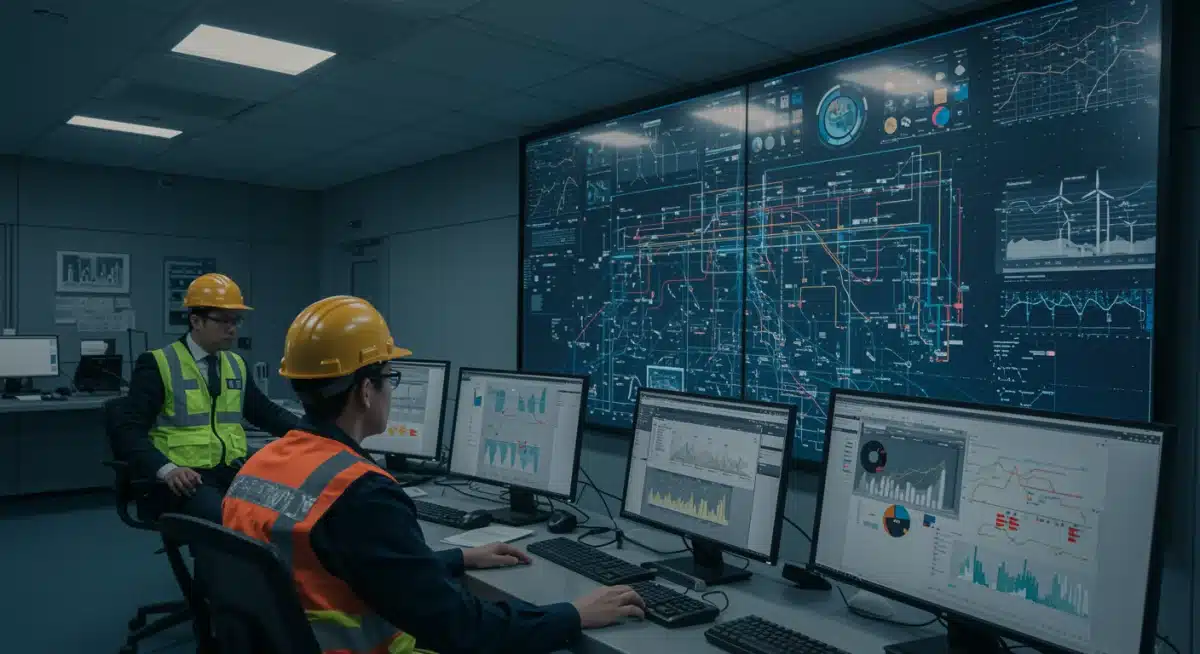
Beyond direct cost savings, a reliable and sustainable energy system attracts investment, fosters innovation, and creates new jobs in the green technology sector. This economic ripple effect strengthens local communities and positions the U.S. as a leader in clean energy solutions.
Challenges and Future Outlook for 2025
While the path to boosting U.S. energy reliability by 10% by 2025 through smart grid integration is clear, significant challenges remain. Overcoming these hurdles will require continued innovation, sustained investment, and robust policy support. The sheer scale of the existing infrastructure and the complexity of integrating diverse technologies present ongoing obstacles that demand careful planning and execution.
Cybersecurity remains a top concern, as a more digitalized grid presents a larger attack surface for malicious actors. Protecting critical energy infrastructure from sophisticated cyber threats is an ongoing battle that requires continuous vigilance and investment in advanced security measures. Additionally, ensuring equitable access to smart grid benefits across all communities, especially underserved areas, is a crucial consideration for future development.
Overcoming Integration Hurdles
Technical and regulatory challenges often slow down the deployment of new grid technologies. Addressing these issues systematically is vital for maintaining momentum towards the 2025 reliability goals.
- Interoperability Standards: Developing universal standards for different smart grid components ensures seamless integration and communication.
- Workforce Development: Training a skilled workforce capable of operating and maintaining advanced grid technologies is essential.
- Public Acceptance: Educating consumers about the benefits and security of smart grid technologies is crucial for widespread adoption.
| Key Aspect | Brief Description |
|---|---|
| Green Tech Integration | Incorporation of renewables like solar and wind, coupled with advanced storage, diversifying energy sources for stability. |
| Digitalization & Data | Real-time monitoring, sensors, and AI analytics for proactive grid management and rapid issue resolution. |
| Policy & Investment | Federal and state funding, along with regulatory support, driving large-scale smart grid deployment and innovation. |
| Consumer Impact | Fewer outages, potential for lower bills, and increased energy independence through demand response programs. |
Frequently Asked Questions About Smart Grid Integration
Smart grid integration involves updating the electricity network with digital communication technology to monitor, control, and optimize energy delivery. It enables two-way communication between utilities and consumers, enhancing efficiency, reliability, and the integration of renewable energy sources.
Green technology improves reliability by diversifying energy sources with renewables like solar and wind, reducing dependence on single fuel types. Advanced battery storage systems mitigate intermittency, ensuring consistent power supply even when renewable generation fluctuates, thus stabilizing the grid.
Data analytics is crucial for smart grids, processing vast amounts of real-time data from sensors and meters. This provides insights into grid performance, predicts potential issues, and optimizes energy flow, enabling proactive management to prevent outages and improve overall system efficiency and responsiveness.
Economic benefits include reduced power outages, leading to less business disruption and infrastructure downtime. Smart grids also enable more efficient energy use and demand response programs, potentially lowering electricity costs for consumers and fostering job creation in the green technology sector.
Key challenges include ensuring robust cybersecurity against increasing threats, developing interoperability standards for diverse technologies, and training a skilled workforce. Overcoming these requires sustained investment, innovative solutions, and strong public-private partnerships to ensure equitable access to benefits.
Looking Ahead
The trajectory for smart grid integration in the U.S. is firmly set on enhancing energy reliability. As of late 2023, ongoing projects and legislative support confirm the nation’s commitment to this goal. What happens next involves the continued deployment of advanced metering infrastructure, expanded renewable energy capacity with sophisticated storage, and the evolution of regulatory frameworks to accommodate these changes. We can expect an accelerated pace of innovation in grid cybersecurity and artificial intelligence applications for predictive maintenance. This transformation isn’t just about meeting a 2025 target; it’s about building a fundamentally more secure, efficient, and sustainable energy future for generations.
